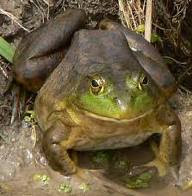Well, as you have also seen, winter ducks are a bit of weakness for me, and there, when I crested the dune, were wonderful floating racks of sea ducks; many kinds of Scoters, Red Breasted Mergansers, Eiders and Loons. What a bonanza! And just as it is fun to look for the aberrant duck on the pond, the possibilities at the ocean are even more tantalizing. So, out with the binoculars and let the scanning begin.
I spent some time sorting out Scoters- Common, White-Winged, and Surf Scoters all present but we have covered them before, so lets move on. Red Breasted Mergansers, now, there is a duck with a wild head of feathers. They are swept back like an application of heavy mousse was available to their stylists, making the “spike- look” popular way before the punk-rock people ever discovered it.

Several large rafts were floating just beyond the waves and watching for one to come up with a fish trapped in its serrated bill ate up more time than I intended. Never saw it happen either. There was a lot of comings and goings among them, and it struck me that the other easy identifying thing about them is that they look like a flying needle with wings, with that long slender bill out in front of them.
Here on the Cape, we have two types of loons that make the coast their winter home. The Common Loon is just that, the one I most commonly see. A heavyset bird, it is the largest of loons, anywhere between 28-36” long and it sits sort of low in the water. We also have Red Throated Loons, which, although I hear everyone saying we have here, I had had a hard time “seeing” because, silly me, I was looking for a bird with a red throat. It turns out to see their throats in their red phase you would have to take a trip to the Arctic during breeding season.

And I don’t know about you, but my “to do” list probably means that isn’t as likely for me. So, on this day, I made a point to look for a loon without a red throat, and, shazam, there they were.

Spread out like the Common loon; one here, one there, and much smaller with a daintier bill that points upward. Ah, this was worth the time that was slipping by.
But what made it really all worthwhile was a Red Banner, write-it-on-my-calendar, sighting of one, just one, Razorbill. But what excitement for me, I have never seen one. It was like looking at a little auk, or a penguin!

And it was right beyond the surf line, near a Common Loon but small and with the crazy bill that lets you know you are seeing something really different. It kept-"ploop", diving down, then thankfully, popping back up again just as close. These are Alcids, cousins to Auks, and probably more often seen along the coast of Maine than here on the Cape, but again, perhaps that Nor’easter, now gone, delivered it here. And they have the cutest, short, little tipped-up tail. Forget the “to do” list, this was the best thing to do after all!
But now, with only one day before I leave, the list is consequently longer than I can probably get to. And what am I doing? Blogging about it! Incorrigible. Oh, and just one more thing. If you were reading this blog last week, I mentioned that first a female Hooded Merganser was at the pond by herself. Then the next day, no female, but a male, then tadaa, on Friday, male and female finally were there together. Perhaps a completely different pair, but it made me feel like social networking was alive and well among our feathered friends. Ok, now go get something done Pat! Happy Thanksgiving again, to you all. Be thankful for detours that show us there is more to life than what we think we have to do!

























